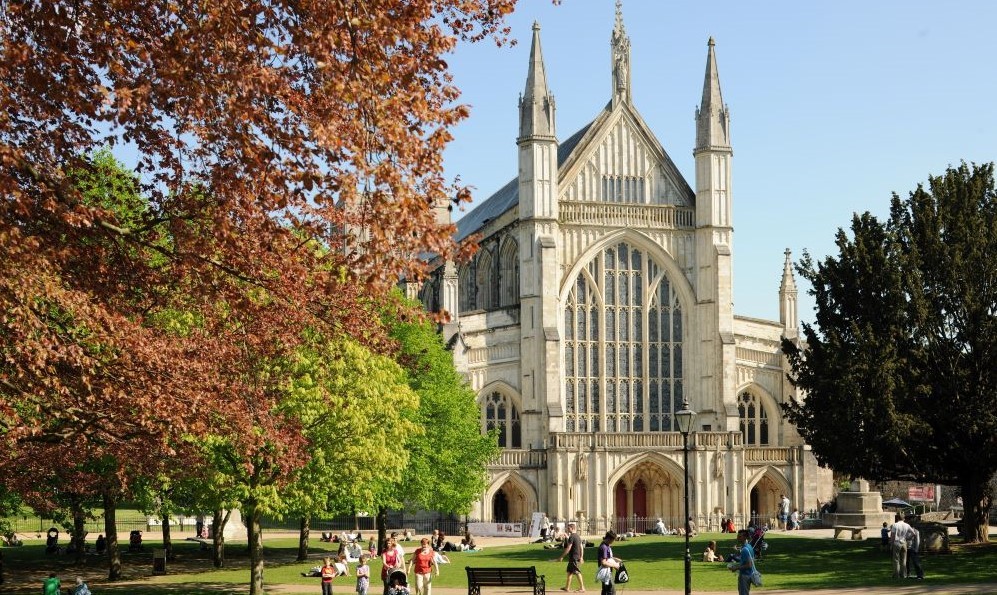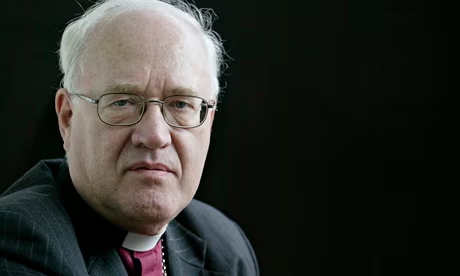
A few weeks back I wrote about the experience of job interviews in the Church. This experience, which many of my readers have endured, is not far from our minds as we contemplate the enormously critical interview due to take place for the post of Archbishop of Canterbury, sometime in the summer months. Two things make this interview stand out. It takes place against a background of political division and intransigence that did not exist to the same extent when Justin Welby was scrutinised back in 2012. Another thing is that the new incumbent will be aware that he/she is taking over a role that has demoralised and enfeebled the immediate predecessor. A further point to be made is that, currently, the financial and spiritual health of the Church of England and the wider Anglican Communion could be said to be in a more fragile state than at any time in the past two hundred years. The conclusion of many people is that the post of Archbishop of Canterbury has now become a thoroughly poisoned chalice in 2025.
In job advertisements for posts in many walks of life, recruiters have often included two useful lists to help a potential candidate decide whether to apply. In one column there is a list of ‘essential’ qualities needed for the post. In another list there are qualities mentioned which are ‘desirable’ for the applicant to have, and these go beyond the bare minimum. The expectation is that, in a situation where two candidates of equal merit present themselves, the applicant with a greater number of desirable qualifications will be preferred. Whether or not such columns exist for the next occupant of the chair of St Augustine, this does not stop interested parties (that includes some readers of SC!) creating fantasy lists as a way of thinking out loud about the qualities we would like to see in a new archbishop. This speculation about the essential and desirable qualities for would-be candidates has been encouraged by the open invitation to every member of the Church of England. All are being asked to express their opinions and even suggest names of potential candidates. It remains to be seen whether such attempts to open up the field to outsider contenders will make any difference to the process which begins in earnest in May of this year.
To return to our essential/desirable fantasy lists, we can start by recognising that there will never really be any widespread consensus as to what should be mentioned in the desirable list. The thoughts in my mind and in that of somebody else on what is desirable, will, undoubtably, reveal something about the compiler and their own ideas/priorities for the Church. Such desirable lists would, anyway, contain an impossibly large number of expectations. The Church, as we all recognise, has so many opinions, manifestations and expressions within it that it would be difficult to find a leader capable of meeting even a small number of these expectations. If we find it difficult to agree what should be on the desirable list because of the wide-ranging nature of peoples’ hopes, the same should not be true for the contents of an essential list. If the next Archbishop of Canterbury is in any way to be successful in the role, it will be because he/she has in some way grasped the nettle of what is the essential direction of travel for the Church over the coming century. What follows is in no way a complete essential list but an invitation to think out loud and share ideas about what is truly important for the future leader in our Church of England.
The rest of this piece will set out my ideas about some of the essential qualities that I believe might be required of an Archbishop of Canterbury today. Some of them will be similar to the qualities we ask of our parochial clergy, but I do recognise that constant public exposure by a church leader to the press and the public requires a particular, even superhuman, resilience and stamina. This is similar to that required of our politicians. Apart from this need to have a enormous capacity for work and the gift of imperviousness to substantial pressures, I centre my remarks on three qualities beginning with the letter ‘I’. They are integrity, inspirational and indwelling. Every one of my readers will probably have further essential qualities to add to this list, but I allow myself the excuse that I only have 1500 words for these musings. On such a big topic it is inevitable that important things will get left out.
I start my essential list with my old favourite – integrity. The next Archbishop of C needs to be for the church’s sake, and that of society, a WYSIWYG – what you see is what you get – kind of person. In this epoch of safeguarding anxiety, we also cannot afford to have a candidate with any involvement with past scandal or even having knowledge of such behaviour. The more general meanings of integrity, involving openness and complete honesty together with a requisite and appropriate response to any wrongdoing, whether by an individual or group, has to be built in and assumed. But the problem is that there has been so much bad behaviour or tolerance of such things as bullying, secrecy and cover-up, that there can only be a few bishops left of whom it can be said that there are no rumours around their actions and decisions in the past. We are not here speaking about such things as mood swings or lapses into irritability but of endemic character flaws that would cause a negative response in anyone hearing about them for the first time. Past attempts to bury scandal, using the tools of secrecy and institutional power, do not compare well with the kind of openness that genuine WYSIWYG integrity implies. Even in our house of bishops, this genuine openness is not as common as we would like in an institution that claims to embody the wholeness and holiness of its founder.
The word inspiration has a special meaning in a Christian context. It refers to the possession of the Spirit, ‘the Lord, the giver of life’. To ask for an inspiring archbishop is to ask for a man or woman who can inspire as they themselves are inspired. To mediate inspiration, the archbishop should be able to teach and preach in a way that makes a mark on the hearer. There should be sound theology as well as memorable inspiring imagery. Something of the excitement of good news should inhabit every public utterance and the impact of the archbishop’s spoken word, whether in a sermon or in the House of Lords, should have the quality of making people want to listen.
The final I word, ‘indwelling’, is not one that immediately releases its meaning without some word of explanation. I want an archbishop to have some of the quality of relating to others which make all their encounters with people special, so that something important is given and shared. This is a gift that I realise few people possess with any degree of completeness, so we can think of this as an aspirational quality to be aimed at, though seldom realised. I have yet to come up with another English word which captures what I mean by indwelling. Such a word would need to encompass elements of true altruistic love, empathy and human sharing. We all recognise this special empathetic quality of relating, when someone of complete integrity looks at us in the eye and gives/shares something of themselves. It is not an act of dominance or control but simply a momentary indwelling and this is experienced as a kind of blessing. An archbishop will meet thousands of individuals in the course of his/her work without the slightest chance of remembering names or anything else about them. But a lot can be given and received in the five second handshake; relationships can begin, and human barriers can start to dissolve, whether those of race, language or culture. The capacity of an archbishop to indwell another person will allow him/her to perform the vital task of building up the institution and helping the entire Anglican structure to find its way back to being the ‘Body of Christ’ in the true biblical sense.
The final question remains. Does a qualified person with these three ‘essential’ qualities exist? Part of me is gloomy in offering an answer to this. But, if there can be found an individual who possesses these three ‘I’ qualities, then there is hope. If on the other hand, serious compromises have to be made over the integrity, inspiration and indwelling/empathy of an otherwise promising candidate, then the further decline of our national church may be rapid.

